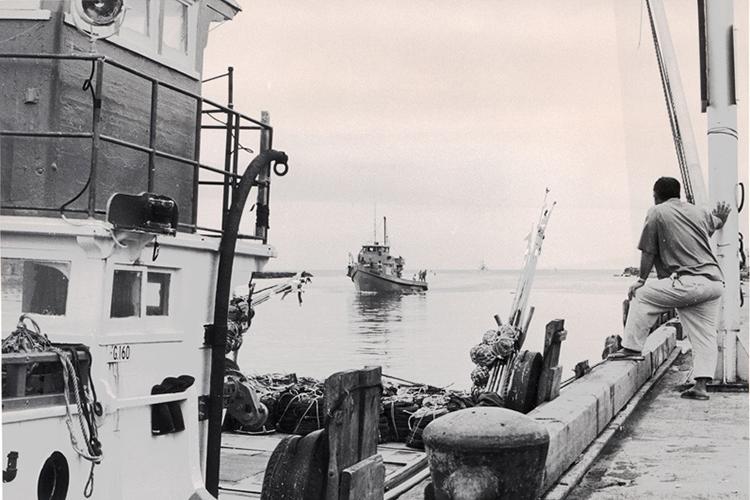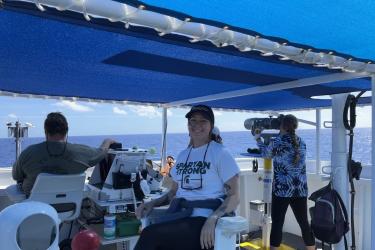The skipjack tuna vessel Buccaneer pulls into Kewalo Basin, Honolulu, in this historical photograph. The vessel at the dock is a longliner. Photo courtesy of NOAA Central Library Historical Fisheries Collection/U.S. Bureau of Commercial Fisheries.
In recent years, many global fisheries have embraced “rights-based management” to address issues such as overcapacity, excess fishing effort, and the race to fish. But what exactly does “rights-based management” mean and why have many fisheries transitioned to it?
Globally, rights-based management results have been positive, but many fishing communities have found the transition challenging. Some fishing communities report a loss of social ties and community values they once associated with fishing.
And rights-based management often leads to consolidation of fishing vessels or interests. Without a limit on permit ownership, consolidated ownership can crowd out small businesses. This may limit opportunities for new fishers and concentrate the market among fewer owners. In short, it can become difficult for single-vessel owners or “mom-and-pop” businesses to compete.
In 1991, NOAA Fisheries and the Western Pacific Regional Fishery Management Council instituted a limited entry permit system for the Hawai‘i longline fleet without a limit to the number of permits one owner could hold. This provided a natural experiment to examine whether fleets consolidated over time. We measured these changes in the Hawai‘i longline fleet over three decades using limited-entry permit transactions from 1990 to 2017, federal logbook landing data, and State of Hawai‘i fish dealer data.
We analyzed ownership using two database fields:
- Permit holder, the permitted entity (individual or business)
- Permit applicant, the entity that applied for the permit.
We found increasing consolidation in limited entry permits and three distinct groups emerged over time:
- Single permit holders/applicants (one entity applied and was permitted).
- Multiple permit holders/applicants (one entity applied for multiple permits).
- Top four permit holders/applicants (four entities that held or applied for the most permits).
The revenue generated by all multiple permit applicants increased over time. By 2017, these three groups shared nearly an equal amount of landings and revenue.
To compare the inequality in revenue distributions, we performed a Gini coefficient analysis. It revealed considerably different results depending on which aspect of the fishery we examined. Interestingly, our Gini coefficient results in recent years for the Hawai‘i longline fleet at the permit applicant level were similar to those observed in U.S. fisheries with catch shares. This shows us that transferable permits in a profitable commercial fishery can drive consolidation, regardless of how rights-based management is implemented.
In some respects, consolidation can be positive. If a pressing management issue requires quick action, it is easier to deal with a few owners of many vessels rather than scores of single vessel owners. At this time, it is unclear if having fewer owners will affect the overall resilience of the Hawai‘i longline fleet over time or whether it will change its social fabric. Time will tell. But if global fisheries are concerned about consolidation, distributional equity, the character of fishing communities, and maintaining viable small businesses, then these concerns must be addressed at the beginning of a rights-based management transition. Otherwise, changing things later on may be politically challenging, as ownership groups become entrenched.
You can learn more about these issues in the latest scientific publication by Adam Ayers and Hing Ling Chan for free online in The International Journal of the Commons.






